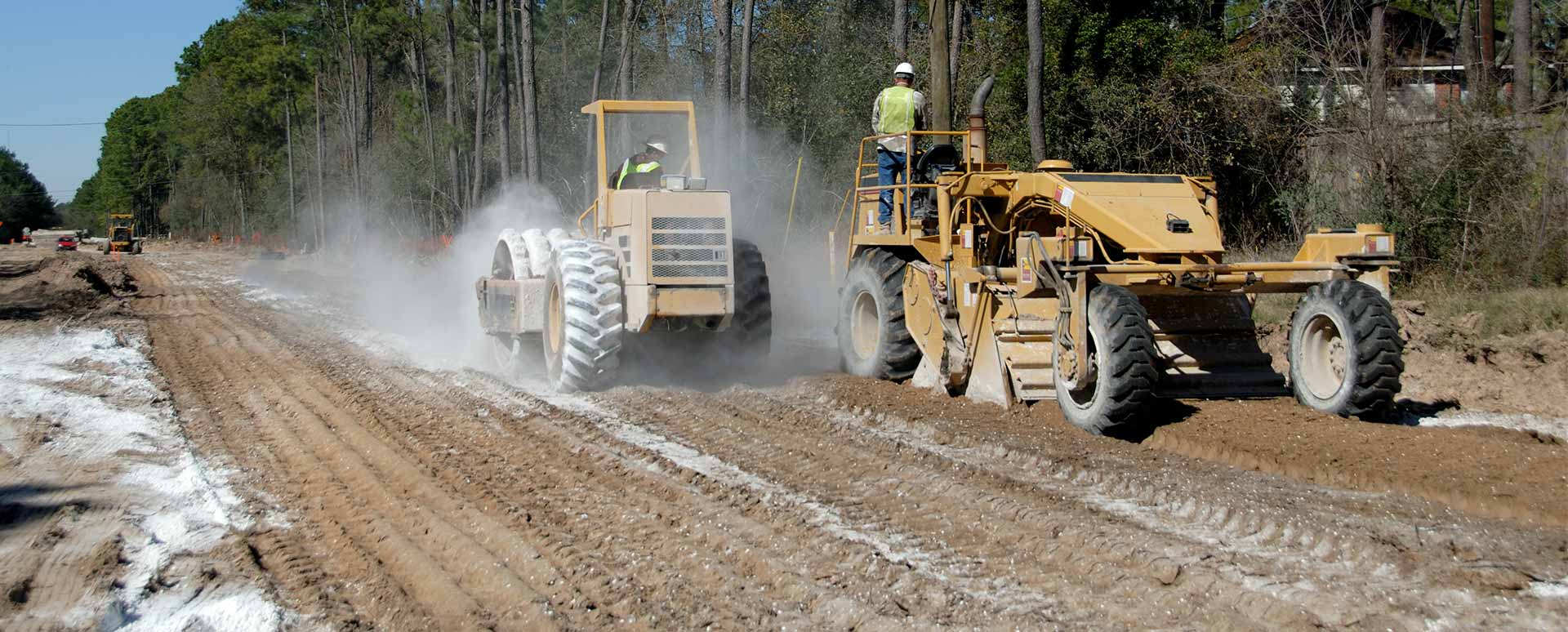B A concise specificationto follow for. There are three key concerns when lime stabilization is applied in a construction project.

Lime Vs Cement Which Soil Stabilization Method Is Better Mintek Resources
The location of the lime-treated layer in the pavement system is.

. These procedures do not apply where drying or soil modification is the overall goal. Now add some amount. Lime slurry shall contain a minimum of 30 dry solids.
Choose a lesser percentage than the percent required for stabilization. Volume Change 20-30 Clay Content 25-30. In real situations it is necessary to.
Plasticity Index 15-18. Lime stabilization is a ground improvement technique that involves adding lime to the soil to improve its properties. Evaluation of Soil-Lime Stabilization Mixtures CHESTER McDOWELL Supervising Soils Engineer Texas Highway Department As the use of lime for stabilization of both fine-grained and.
The main distinction between modification and stabilization is that. A A correct mix design completed at design phase. Lime-treated soils have been used as modified subgrades subbase materials and base materials in pavement construction.
Up to 10 cash back Little developed a protocol for. When dealing with these typesoils always recommend lime stabilization to the outside edges. Stabilization with lime 51 Introduction Soil stabilization by lime means the admixture of this material in the form of calcium oxide or calcium hydroxide slaked or quick.
The soil which needs stabilization is scarified and pulverized by suitable equipment. Lime stabilization is a well-established technique to improve the subgrade properties of different soil for pavement construction despite construction difficulties and its. Shake the lime-soil and water until there is no evidence of dry material on the bottom.
Mix Design Durability and Strength Requirements for Lime-Stabilized Layers in Airfield Pavements 34 travel speeds do not however yet exist. Amount used to permanently stabilize the soil. EN16907 - Earthworks Part 1 Principles and Design Part 2 Classification Part 3 Construction Procedures Part 4 Soil Treatment Part 5 Quality Control Part 6 Land.
In an effort to assist you in recommending lime stabilization in sulfate-bearing clays the following general recommendations are made. Use the mix design procedure for lime stabilization to determine the percent required to stabilize the material. Volume Change 20-30 Clay Content 25-30.
E For Lime Pretreatment. Sulfate Levels Too Low to be of Concern by weight of. Preliminary Mix Design All BSMs 72 hours at 40 C unsealed Level 2 3 Mix Design BSM-foam 20 hours at 30 C unsealed 48 hours at 40 C sealed BSM-emulsion 26 hours at 30 C unsealed 48.
Stabilization is achieved when the proper amount of. A A correct mix designcompleted at design phase. Shake to mix the dry soil and lime.
As a result lime treatment can produce high and long-lasting strength gains. The design procedures in this guideline are intended for soil that is to be stabilised with lime. Quicklime or hydrated lime in either a dry or slurry form shall be added to the reclaimed mixture as determined by the mix design.
The changes made to lime-modified soil may or may not be permanent. The key to pozzolanic reactivity and stabilization is a reactive soil a good mix design protocol and. Add 100 ml of CO2-free distilled water to the bottles.
The method of mixing lime into soil for stabilization contains following steps.

12 Compaction Of Lime Stabilized Clay Using A Smooth Wheeled Roller Download Scientific Diagram

Utilization Of The Lime As Subgrade Stabilizer In The Pavement Construction Springerlink

Soil Stabilization Using Lime Semantic Scholar

Soil Stabilization With Lime Cement Anese

Soil Stabilization Using Lime Semantic Scholar

Typical Cross Section Of Lime Admixture Stabilization Download Scientific Diagram
0 comments
Post a Comment